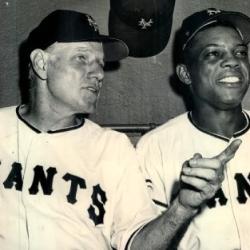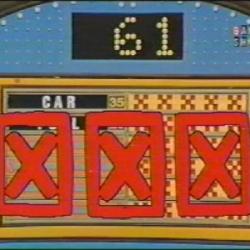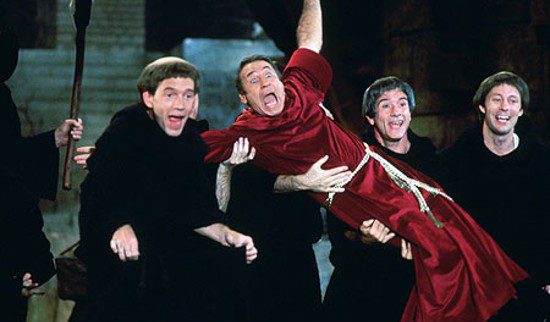Samuel Goldman digs into why the category of “Mainline Protestantism” seems to mean different things to different people and is therefore hard to measure: “Mainline Protestantism is America’s phantom limb.”
Goldman is responding to the recently released Public Religion Research Institute survey data showing a small increase in that category, and he’s convinced that either PRRI’s data is off or that they’re interpreting/reporting it wrong. I suspect the problem is their use of “mainline Protestant” as a somewhat formless dumping-ground category for most American Christians who are neither white evangelical Protestants nor Roman Catholics.
Goldman offers a very clear description of the reasons that most attempts to define, measure, and quantify religious categories wind up being anything but very clear. “Religion is among the most difficult phenomena to quantify,” he writes:
The subjective nature of religious identity is one challenge. Are you a Protestant, Catholic, Jew, or Muslim because you think you are? Because you believe certain doctrines? Or because you engage in certain practices? Ordinary people often apply less demanding criteria than do formal institutions, which is one reason that the rolls of organized religious communities lag self-reported affiliation. Considering actual membership figures, [Ryan] Burge came to “one clear and unmistakable conclusion — the largest traditions in the mainline are losing members at an incredibly rapid rate,” not enjoying a miraculous revival.
Burge’s use of “actual membership figures” seems more concrete than PRRI’s surveys and polls, but it’s also based on some subjective assumptions or presumptions about what traditions do and do not belong “in the mainline.” That’s far fuzzier and shiftier than any crude just-count-the-members approach might seem to promise. It seems to start from a place that says, “Mainline Protestants are … well, you know, mainline Protestants.” The Presbyterians of the PCUSA but not the Presbyterians of the PCA. United Methodists but maybe not Wesleyans. Methodists and Episcopalians, but not the AME. Episcopalians but not the anti-Episcopal US “Anglicans.” American Baptists but not Southern Baptists or Anabaptists. And where do we put the Friends or the Unitarians?
Now go into any white evangelical mega-church pastor’s study and look at the bookshelves. Look at all the books by people like N.T. Wright and John Stott and Eugene Peterson. If we’re counting “actual membership figures,” this pastor is not a “mainline Protestant,” but most of the authors who inform his preaching are. And a lot of those same beloved-by-evangelical-pastors books will be found in the pastor’s study at your local PCUSA, Episcopal, or UMC church too.
Notice also that the intra-denominational boundary lines — PCUSA vs. PCA, American vs. Southern Baptist, etc. — don’t trace back to the early 20th-century fundamentalist/modernist disputes as much as they originate, rather, in antebellum arguments about slavery. Set aside the very revealing and vitally important theological substance of that and just consider how it undermines the naive simplicity of counting “actual membership figures.” There are more American Baptist congregations per capita in West Virginia than in any other state. These southern Northern Baptists tend to be white evangelicals, not anything like any stereotype of “mainline Protestantism.” But they’re emphatically not Southern Baptists because, well, because of the Civil War.
If we try to formalize the category of denominations that count for counting “actual membership,” we wind up using some standard like denominational membership in the National Council of Churches. This is why, back in the ’90s, the murky mainline/evangelical dichotomy was often described, instead, as a contrast between “evangelical” and “ecumenical” forms of Protestantism. That proved less than helpful for navigating or explaining a context with an increasingly pragmatically ecumenical religious right. The search for political allies and “co-belligerents” led not just to “Evangelicals and Catholics Together,” but to “pro-family” overtures to conservative Islamic groups. (This interfaith cooperation among anti-feminist/anti-gay religious groups ended, abruptly, in the late summer of 2001, but it was a very real thing in the late ’90s.)
Insisting on the relevance of the NCC also winds up predetermining one’s conclusions. “It ain’t the ’50s anymore” becomes, in a way, both the premise and the product of this “measurement.”
That’s another problem with the whole notion of “mainline Protestants.” It’s an outdated term for a host of outdated cultural connotations that most people my age or younger don’t have any way of knowing about.
Last week, I was unloading a pallet of the stuff on the left (below) and launched into an impromptu bit based on the guy on the right. This included some nifty double-layered punning, a semi-passable impression of Johnny, and an excellent Ed McMahon. But it was incomprehensible for my co-workers because all the guys I was unloading the truck with were under 35 and had barely even heard of Johnny Carson, let alone Carnac the Magnificent.

There’s a sense in which every discussion of the “decline of mainline Protestantism” is like this. Yeah, OK, everybody isn’t sitting around reading Bultmann and Barth and Tillich anymore, just like they’re not all waiting up to watch Johnny or Steve Allen or Jack Paar on network broadcast television. Or Leno and Letterman either.* But anyone lamenting (or celebrating) that is telling us more about their own cultural currency than they are about the current state of the culture.
But if “actually counting members” is trickier than it looks because you have to decide who counts as a member and which memberships count and that’s all going to be more subjective than it initially sounds, at least that approach avoids the second problem Goldman describes with PRRI’s survey approach:
The subjectivity problem is exacerbated by desirability bias — in other words, a tendency to exaggerate opinions or behavior others regard favorably. Since religion is bound up with cultural preference, political orientation, and social status, survey respondents may give the “right” answer about their affiliation even if it does not correspond to their true beliefs or activities. Inverting the “shy Trump voter phenomenon,” Christians who want to distance themselves from the Republican Party or conservative politics may now be avoiding the “evangelical” label.
This “desirability bias” makes surveys less useful for trying to measure actual “membership” in actual categories. (Or — as is often the case — to try to quantify membership as a way of creating categories that may or may not actually exist apart from our attempts to measure them.) But it also makes surveys more useful for measuring something else — namely for gauging what it is that people perceive as generally “desirable.”
In other words, PRRI’s “census” data may not be evidence that white evangelicalism is actually shrinking as much as it seems to show, but it is evidence that white evangelicals are becoming more aware that identifying oneself as such is not “the ‘right’ answer” — not something that most of one’s neighbors will perceive as positive, benevolent, or admirable.
And that increasing awareness of the diminishing “desirability” of this identity is a potentially a Good Thing. If more people are thinking “I’m an evangelical Christian, but I don’t want to say I’m an evangelical Christian because I don’t want people to think I’m a jerk” then those people are one step closer to thinking “We evangelical Christians need to work on how others perceive us so we don’t come across as jerks” and maybe even possibly one step closer to thinking the related, but still very different, “Maybe we should stop being jerks.”
This may also account for PRRI’s surprising finding of an increasing number of alleged “mainline Protestants.” Whether or not this is an actual category, and whether or not it’s actually growing, PRRI’s survey shows that it’s got a lot more “desirability” than the negatively perceived category of “evangelical.” Claiming the identity of “mainline Protestant,” in other words, may be a way for survey respondents to say “Please don’t hate me because I’m not one of those people who hate you.” So-called “mainline Protestantism” may no longer be the cultural default it was in the mid-20th Century, but it’s not regarded as a liability. Nobody seems to hate “mainline Protestants.” (Well, except for white evangelicals — but they hate everybody, so that hardly counts.)
Goldman also points to a larger “complication” due to “taxonomy”:
The PRRI classified all Protestants who didn’t say they were “born again” or evangelical as “mainline.” But these categories are neither easily defined nor mutually exclusive. More confusing still, the very term “Protestant” seems to be dropping out of use among younger and less educated Christians.
A joke from the off-Broadway musical Do Black Patent Leather Shoes Really Reflect Up? illustrates this point. The narrator tells us that in his neighborhood growing up in the 1950s, “There were only two kinds of kids: Catholic and public.” That’s a good description of the former hegemony of so-called “mainline Protestantism.” Yes, it was once a culturally dominant form of religion, but it was so culturally dominant that it barely even registered as religion — just as the “public” default and norm.
But cultures change. One change that arrived with the increasing cultural influence of white evangelicalism in the later decades of the 20th Century was the shift from the categories of “Catholic and public” to the categories of “Catholic and Christian.” I heard this recently from a 20-something friend who’d recently attended a Catholic funeral. He told me he’d never been to one before because he “grew up Christian.”
This is a confused and misleading binary — one that seems insulting both to Catholic Christians and to everyone who is neither Catholic nor evangelical. I think it emerges from the also-confused-and-misleading binary from that joke in Black Patent Leather Shoes. As generically Protestant white Christianity began to lose its default/hegemony status, it began to assert itself in more explicit and particular forms, leading to greater public discussion of and attempts to measure/create-by-measuring “evangelicalism.” This led to a general sense of the “rise” or “growth” of evangelicalism with a presumed corresponding decline of “mainline Protestantism.” After all, everyone was talking about evangelicalism but no one was talking about mainline Protestantism any more. (Hardly anyone had been talking about “mainline Protestantism” before, either, but let’s not let that ruin a tidy narrative.)
Anyway, the title for this post comes from an old Gospel song which is neither about mainline Protestantism nor about the affluent western suburbs of Philadelphia. It’s about rotary landline telephones — meaning it’s a reference to archaic technology that’s bafflingly irrelevant to most listeners these days.
My point here isn’t that this is analogous to the now hopelessly outdated cultural relevance of “mainline Protestantism,” but that it’s analogous to the now hopelessly outdated cultural relevance of the hoary 20th-century discussion of the decline of mainline Protestantism.
Here’s Ry Cooder playing big licks on a teeny little mandoguitar:
(“Jesus on the Main Line” is one of those rare crossover tracks that works either as Gospel or as “Southern [white] Gospel.” Here’s another rendition that walks the line between the two genres, featuring Jerry Lee Lewis’ cousin on piano.)
* It’s worth noting, too, that my Karnak/Carnac joke wouldn’t even have worked 40 years ago because the guys unloading trucks over night wouldn’t ever have been home to watch The Tonight Show. It’s not just that it’s no longer the case that “everybody watches Johnny Carson,” but that it was never actually the case that everybody watched Johnny Carson.












